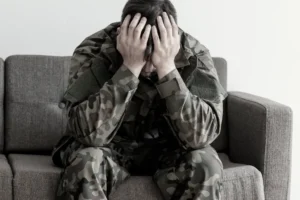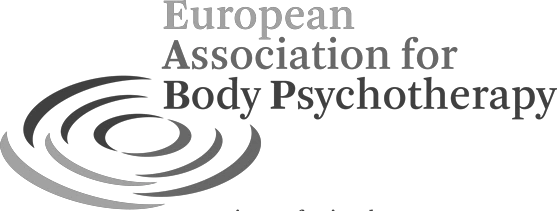Self-Regulation and Stress Management

Self-regulation – Overview
Self-regulation comprises the skills people use to regulate the level of activation of their nervous systems. It’s less about calming down and relaxing than about finding the right balance between activation and relaxation. Ideally, this self-regulation occurs unconsciously and automatically.
The nervous system reacts subconsciously to the emotional impact of life’s demands. Ideally, this enables us to master difficult situations with great attention and then to recover. We can react appropriately to external or social stress.
The balance of the nervous system includes in particular the autonomic nervous system. Thwhich is not subject to conscious control – functions such as heart rate, heart rate variability (HRV), blood pressure, body temperature) but also, in particular, breathing (breathing rate and depth of breathing).
This article comprises information how lack of self-regulation occurs and how to restore the ability to regain self-regulation.
Overview
Causes and symptoms of lacking self-regulation
The loss of self-regulation
Maybe it’s the constant higher stress in everyday life over a longer period of time that makes it impossible for us to get back into balance . In addition, drastic experiences (shocks / trauma) can cause us to lose our balance. In these cases, our nervous system gets out of balance:
- Unprocessed stressful events (shock and developmental trauma) can linger and keep the body in a state of exaggerated activation, alertness and vigilance.
- Long-term strain or stress of a professional or private nature can throw the body and nervous system out of balance through a constant flight or fight mode.
In these cases, our practiced mechanisms are no longer sufficient to regulate ourselves. Then it also becomes apparent that we hadn’t even learned some elementary techniques of self-regulation – perhaps because we didn’t need them or because we didn’t have suitable role models.
In addition, in our modern world, many physical and social mechanisms for regulating stress outside are not sufficiently available. A physical solution to the flight or fight reflex is not available in everyday office life. Often I don’t have a counterpart with whom I can discuss a conflict. Email and messenger or social networks are reduced to the exchange of information – the important personal contact that can provide security in disputes is missing in these media. In addition, there is often no time at all for clarifying discussions or meetings.
Self-regulation is all the more important when stress cannot be resolved through supportive social contact
Stress-symptoms – Consequences of a dysregulierted nervous system
A lack of self-regulation causes physical stress symptoms. Self-regulation thus provides essential tools for the management of stress symptoms
- insomnia / lack of sleep
- nightmares
- nighttime teeth grinding or clenching (bruxism)
- muscle tension
- back or neck pain
- too high or too low blood pressure
- sweating
- feeling of being overwhelmed
- fears
- irritability/aggressiveness
- difficulty concentrating
Goals and methods to strengthen self-regulation
Objectives of Self-Regulation
Self-regulation is mainly about releasing stress in order to bring the body and nervous system back into balance. This comprises releasing post-traumatic stress as well as releasing current everyday stress. In addition it is about learning techniques with which I can deal well with the stress of everyday life and deal with our triggers for higher stress.
Strengthening the ability to self-regulate brings body and mind back into balance. This can have a positive impact on the symptoms of an overactive nervous system. Therapeutic approaches to strengthening self-regulation are e.g. Somatic Experiencing® and Bodynamic®.
Often the reduction of symptoms is a reason to seek therapeutic support. Such effects represent an additional benefit, which requires the long-term application of self-regulation techniques. Given that there is no direct relationship, the improvement in symptoms cannot be guaranteed.
Learning self-regulation with therapeutic support is help for self-help to manage the activation of the nervous system and bring mind and body back into balance.
Somatic Experiencing® – Processing of post-traumatic stress und self-regulation through work with the nervous system
Somatic Experiencing is designed to strengthen the natural self-regulation in the autonomic nervous system and to resolve post-traumatic stress conditions.
The aim is to calm the nervous system with the help of therapeutic support (co-regulation), to discharge stored traumatic states of excitement and to release difficult emotions. As a result, the organism can react more appropriately to stimuli in the here and now. This work with the nervous system enables the body to better regulate the natural rhythm of tension and relaxation.
For this purpose, well-organized aspects of experience and behavior are strengthened. In addition, less organized aspects of the experience will gradually be brought back into balance.
The Somatic Experiencing Methodology:
- The awareness of physical processes is created and practiced.
- Sensing awareness is deepened.
- Emerging emotions and physical states of excitement are gently processed
- Processing and discharge of traumatic stress through titration and pendulation
Due to its careful approach, the Somatic Experiencing approach is particularly suitable for helping to bring the nervous system back into balance from dysregulation after traumatic events.
Somatic Experiencing is particularly suited to gently and mindfully discharging traumatic stress.
Bodynamic® – Building competences through psychotherapeutic work with the muscle system
Bodynamic is designed to strengthen the ability to regulate oneself naturally by developing elementary ego functions.
Bodynamic coaching and therapy aims to make muscular states of tension more flexible and to wake up the muscles with the help of psychotherapeutic support (co-regulation). As a result, the individual can again actively shape their social contacts and react more flexibly. Through this work with the muscular system, the body can better regulate the natural rhythm of tension and relaxation.
This makes it possible to understand psychological defense mechanisms as resources, to develop and practice additional skills and to be able to use physical skills flexibly.
The Bodynamic methodology:
- The awareness of embodiment and movement in contact is created and practiced.
- Sensing awareness is deepened.
- Emerging emotions and physical states of excitement are gently processed
- Own needs and impulses are felt and expressed.
- Muscle tension patterns are encountered and can be released, muscle release patterns are gently supported and can thus wake up a bit.
- Specific practical solutions to problems are developed and practiced









